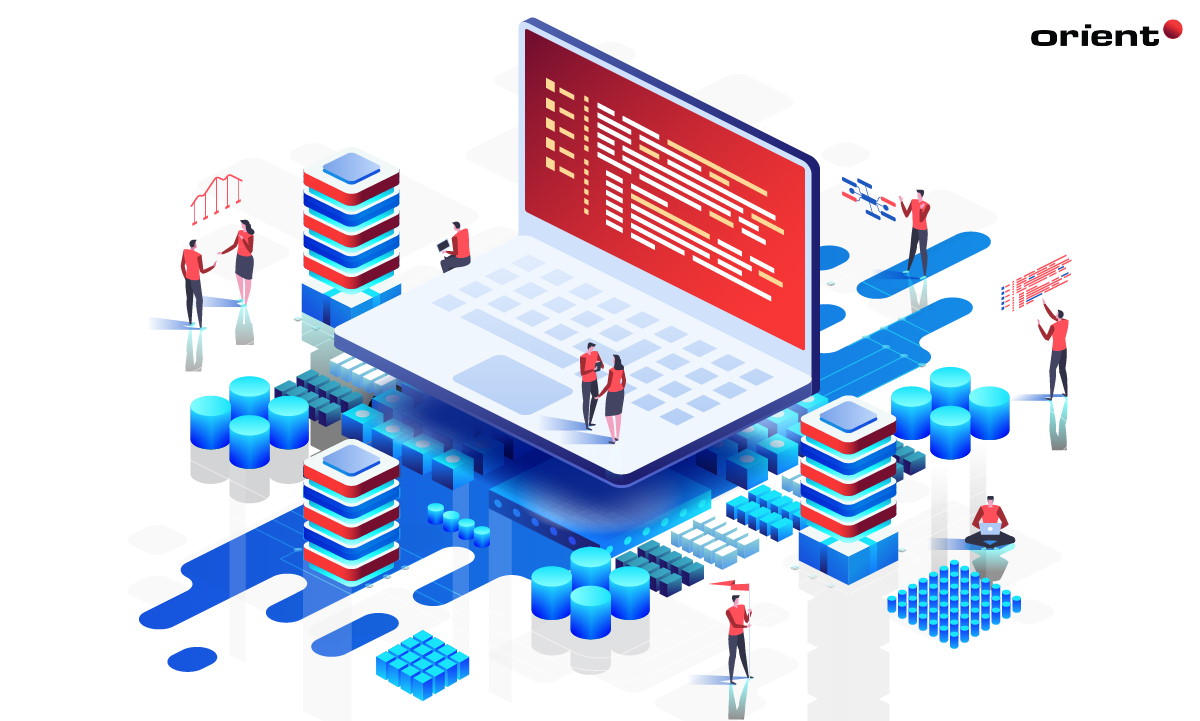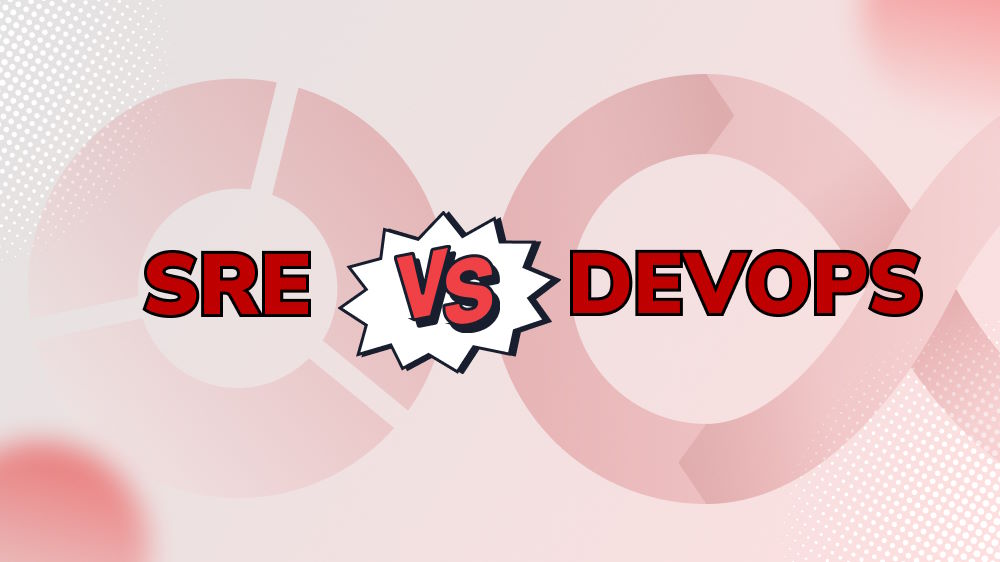A Delve into the DevOps Maturity Model

Content Map
More chaptersDid you know that the DevOps initiatives were first kick-started in 2007 when the communities of software developers and IT professionals raised concerns about the traditional software development methodology, wherein the process of writing code is isolated from the deployment? Since then, DevOps has steadily become mainstream in the IT industry as current and has transformed the organizational workflow by increasing collaboration and automation between software developers, testers, and IT operations.
Nowadays, DevOps, widely employed, has become a higher priority than ever before. Its market is foreseen to evolve incessantly over time even though it is huge already. In particular, the global DevOps market size is predicted to hit a compound annual growth rate of 18.95%, estimated to be $12,215.54 million by 2026. Since businesses are commonly at some stages in their DevOps operational model journey, there is a need for them to understand the DevOps maturity model in order to measure progress and identify areas where improvement is required.
Before understanding the DevOps maturity model, it would be helpful to gain some basic knowledge about the culture first.
What Do You Know About the DevOps Culture?
DevOps Explained
For those who are not familiarized with the term DevOps, it is a collection of cultural philosophies, practices, and tools that are employed in the software development life cycle to facilitate cross-team collaboration and communication between the Dev and Ops teams (development and operations) as well as technology automation. The DevOps adoption allows teams to work hand-in-hand to build, deploy, monitor, and support software applications in a fast-paced environment. The DevOps goals are to streamline and automate the organizational workflow to the fullest, securing business outcomes.
DevOps Practices
- Continuous Development: Continuous development is one of the cornerstones of the DevOps culture. It includes a constant cycle of code writing, automated testing, and deployment, which helps organizations build software faster with fewer errors.
- Continuous Integration (CI): As its namesake, CI is the practice that enables developers to integrate new code into existing applications regularly and frequently without compromising the code’s quality and stability. The process allows developers to detect, debug, and troubleshoot errors early on in the software development lifecycle.
- Continuous Delivery: This is the automation process of getting changes into production. Continuous delivery enables DevOps teams to release code changes to users quickly.
- Continuous Deployment (CD): CD takes the delivery process a step further by automating the deployment pipeline. Development teams use continuous deployment tools to define and automate the series of steps required to move software from development to production.
- Continuous Testing: Automated testing enables DevOps teams to test the software for errors and defects faster in a real-time environment before being released to users. Implementing continuous testing is a crucial step in the continuous deployment process as it helps teams ensure that their code is functioning correctly and meets user expectations.
- Configuration Management: It is the practice of tracking and managing changes to the configuration of software applications. This type of automation allows DevOps teams to more easily manage code dependencies, build infrastructure quickly, and reduce errors in software development.
- Monitoring & Logging: This is an essential part of DevOps operations, as it allows teams to keep track of what’s going on and troubleshoot issues quickly. Monitoring and logging tools enable DevOps teams to detect anomalies in application performance, identify problems with code, and respond quickly when issues arise.
- Infrastructure as Code (IaC): This practice automates how teams configure, manage, and deploy their infrastructure. By using Infrastructure as Code tools, DevOps teams can automate their infrastructure management processes.
What Exactly Is This DevOps Maturity Model?
Definition
At its essence, the DevOps maturity model is described as a benchmark used to determine which point an organization is standing in its journey of the DevOps process. Or simply, it serves as a scale to measure the maturity level of one organization’s DevOps capabilities, thereby identifying areas to enhance and what more to accomplish in order to achieve the desired DevOps maturity goals.
There are some sorts of misconceptions about the goal of achieving DevOps maturity. So, let’s make this clear first that DevOps maturity is a continuous journey, not any destination you were meant to reach eventually, which means the adoption of DevOps culture is long-term and must be managed and maintained over time.
Stages of DevOps Implementation
The complete DevOps maturity model is considered achieved when an organization has undergone all these stages:
Stage 1: Initial
At this point, organizations have no idea about DevOps challenges as well as its benefits. They have no DevOps process in place yet but stick to the traditional environment in which Dev and Ops teams are managed separately, software applications are tested manually, and changes take more time to go into production.
Stage 2: Manage
This is the beginning of the DevOps journey when organizations gain knowledge about the core principles and values of DevOps and start focusing on agility in Dev and initial automation in Ops, emphasizing collaboration. As such, DevOps practices are implemented into the activities of small teams before bulk applying to larger teams and projects.
Stage 3: Define
When it comes to this stage, teams have got familiarized with the DevOps processes and tools, and organizations have started putting in place defined workflows following Agile practices and secure automation of the CI/CD pipeline.
Stage 4: Measure
Organizations and teams gain an in-depth understanding of DevOps strategy, and automation is well-positioned to replace most of the manual processes. This is when metrics are defined and incorporated into the workflow to measure the performance of the DevOps operations over time and feedback for maturing the processes and driving continuous improvement.
Stage 5: Optimize
At this stage of an organization’s DevOps maturity journey, the accomplishments are noticeable, seamless collaboration among teams, DevOps automation is fully embedded in the workflow, and testing processes are conducted in production. Therefore, this stage is all about maintaining and optimizing the DevOps practices within the workflow.
How to Assess the Maturity of an Organizational DevOps Journey
You can claim that maturity is what reflects a successful DevOps adoption, and it is gauged by looking at the following components of the DevOps cycle:
Culture & Organization
DevOps culture calls for cultural changes. A majority of IT decision-makers agree that cultural and organizational issues are their biggest hurdle in adopting DevOps. The involvement of DevOps practices straightforwardly impacts the working culture of an organization as it encourages the participation of various teams so that they are on the same page, working toward common goals. This shift will call for proper openness, and organizations must adapt to it to create a suitable culture in which there are rooms for DevOps practices to grow and thrive.
Incorporation of CI/CD Pipelines
CI/CD pipelines are among the essential automation components of DevOps that allow organizations to ensure continuous integration and delivery of software applications seamlessly. This type of automation requires extensive testing processes, which must be carried out in an integrated environment while giving feedback on how to improve the pipeline over time.
Processes & Tools
Agile practices and DevOps tools are two integral components of the DevOps journey. While agile stands as a set of guiding principles that aim at reaching optimum efficiency, DevOps tools provide the automation capabilities required for streamlining processes and incorporating continuous feedback from metrics.
Automation & Infrastructure
Infrastructure automation is vital for achieving the desired speed in DevOps practices and operations. Automation relieves organizations from manual processes, enabling them to focus more on improving the quality of their services or products while still delivering faster releases into production.
Collaboration & Communication
Collaboration and communication are the cornerstones of an organization’s DevOps maturity success. Effective collaboration and communication between teams and individuals - both internal and external - is necessary for streamlining processes, managing costs, increasing efficiency, and meeting deadlines. By looking at how well organizations do at this point, it is possible to measure how mature the DevOps journey has been.
Testing & Integration
The integration and testing process is an essential indicator in the DevOps maturity assessment as well. This includes both manual and automated tests that allow a team to evaluate the code quality, identify any issues, and ensure that all components are integrated correctly before being released into production.
DevOps Maturity Model Connected to Security

DevOps maturity links to security directly. And security is an integral part of the maturity assessment process as it is required to ensure safety and reliability on both the software application and the infrastructure. Therefore, organizations need to incorporate security into their DevOps processes and tools – DevSecOps – to make sure they are well protected against threats and vulnerabilities. This means DevOps and security teams must work hand in hand to ensure security practices and frameworks are in the position for all stages of the software development lifecycle.







